Mother Nature is harsh, powerful, uncaring and destructive. Her storms, tsunamis, sudden tidal rises and other natural calamities can snuff out hundreds and thousands of life in a single minute. Yet, she is also kind and considerate, and she has provided us landscapes and ecosystems that protect us from her awesome wrath. The Bakhawan Eco Park in barangay New Buswang in Kalibo, Aklan, Philippines is one of these protective natural structures. Planted by Mother Nature and carefully maintained by humans, this expansive mangrove forest effectively acts as a barrier to protect the shoreline from storm surges, erosion and floods.
When we arrived at the Kalibo Ceres bus station from our wonderful side trip in Tibiao, we asked a tricycle driver on how to get to Bakhawan Eco Park. At first, he charged us P80. We thought it was a little too much, but we were not familiar about the place anyway.
Fortunately, good Samaritans—the security guard and a local who was hanging out at the visitor’s area—heard our conversation and came to our rescue. They told us not to agree with the deal and castigated the driver for trying to rip us off. The actual local fare, we found out, was just around P16 per person. Sheepishly and ashamed of himself, he agreed to take us to Bakhawan Eco Park at P20 per person. Thank you, good Samaritans!
After registering, we started our tour around the park. Right near the entrance is this humble structure that houses the Center for International Mangrove Studies. It has a conference room, a few offices, and a research lab.
This simple wood-and-bamboo boardwalk is the centerpiece of the park. At 1.3 kilometers long, it takes visitors deep into the mangrove forest. Yes, touring this park involves a short but healthy hike.
We salute the workers who constructed this architectural marvel.
Every hundred meters or so is a small shed where guests can rest and catch their breath. Or you can simply stop here, sit down, and marvel at the rich mangrove forest all around you. Each shed has several trash bins where garbage can be properly disposed of.
A quarter of the way, we came across a clearing that constitutes a playground and a few sheltered sheds where guests can hang out.
Walking along the boardwalk, we came across the beautiful, wide So-oc River. It is one of the most impressively pristine rivers we have ever seen.
Crossing the river involves walking along this rickety wood and bamboo bridge. We love the creaking sound it makes with each step, and its squeaks go perfectly well with the sound of birds squawking in the distance.
The expansive Bakhawan Eco-Park covers an area of 220 hectares. Most of the forest is the result of a successful mangrove reforestation project that started back in in 1990. The LGU and several NGOs implemented the project to protect Barangay New Buswang’s shoreline from storm surges and floods.
Today, the Kalibo Save the Mangroves Association (KASAMA) handles the operation, maintenance, and research of the park.
There are many species of mangrove, or bakhawan in the local dialect. KASAMA placed name boards on many of these trees.
Mangrove roots are truly biological wonders. Their roots are thick, hard, and impermeable thanks to a substance called suberin. The suberin acts as a filtration system that removes salt from the water that the mangrove absorbs. It is so effective that in fact in recent studies, the roots filter 90 to 97 percent of the salt! That is one effective filtration system, isn’t it?
Those upright spiky structures are called pneumatophores, and they are part of the mangrove’s root system. They act as breathing organs for the mangroves, absorbing carbon dioxide and ejecting oxygen.
Because of its unique environment, mangrove forests offer a rich and healthy environment for various organisms. The KASAMA made initiatives to culture fish, prawns, clams, and crabs. We believe you can buy a few of these cultured seafood to cook at home.
The eco park, therefore, not only protects the shore but also provides a means of livelihood for the locals.
We often see mangrove fields and wonder how these low bush-like plants can protect shorelines from powerful storm surges. Now we know. Full-grown mangroves are surprisingly tall, and a single hectare of healthy mangrove plants can provide a totally effective barrier.
Over the years, many sections of the original forest have been destroyed or damaged by both natural disasters and man-made activities. KASAMA implemented an ambitious mangrove reforestation project in the 90’s to mitigate the damage and restore the forest’s glory. Today, the United Nations Food and Agriculture Organization considers the Bakhawan Eco-Park as the country’s most successful mangrove restoration project and one of the exemplary mangrove forests in Asia and the Pacific region.
More than halfway along the boardwalk, we came across a shady hub of some sort. Carefully manicured gardens, open-air picnic huts that guests can rent, information boards, and photo stands dot the cool plaza.
After walking a few hundred meters more, we arrived at the end of the 1-kilometer boardwalk. Congratulations for a nice hike!
The bamboo boardwalk ends at the very edge of a shallow inland lagoon. A long sandbar borders the lagoon from the open sea. Just check out that beautiful scenery!
Guests can rent a boat or ride a raft to get around the lagoon. We would have wanted to do that, but we opted for something more interesting—and daring—in mind. Hehehe!
The boardwalk extends into an expansive esplanade with cottages and lounges where people can relax after the short hike. There’s also a small store where visitors can buy snacks, drinks, and souvenirs. Guests can also rent colorful kayaks so they can paddle around the lagoon.
Somewhere in the esplanade, we also found this artistic old fellow painting masterpieces with simple brushes and paint. You can buy a plain shirt at the store and have him expertly paint some beautiful artwork on it.
A Tamilok Demonstration
Just like in any other ecosystem, a mangrove forest is a place for many creatures that are both beneficial and detrimental for the mangroves. During our visit there, we want to “meet” the latter. We’re talking about an ugly, slimy creature called a tamilok, commonly known as a shipworm. Shipworms burrow through mangrove trunks, timber, and other wooden items that are submerged in the sea. They aren’t called termites of the sea for no good reason.
To get some tamilok, we hired a guide to saw off a piece of dead mangrove trunk. There are plenty of these pre-cut trunks, which are used to culture the tamilok.
With a few whacks of a sharp hatchet, our guide split the log to expose the burrows of the slimy tamilok.
Each tamilok is pulled out from its burrow carefully by hand. We never knew that a 3-foot long piece of log could hold so many shipworms.
Check out the photo below; it’s not difficult to imagine how these pests can easily kill mangroves. And they’re pretty darned hard to eliminate because there has been no effective treatment to prevent infestation of shipworms. Sailors often attach copper sheets at the bottom of their ships to prevent such infestation.
Here’s a closeup of the tamilok. It looks like an ugly, gross, fat worm, doesn’t it? But actually, it’s more related to an oyster than a worm.
After all all the tamilok has been harvested, we took out the inedible parts—the head and the tail. The head is made up of two bivalve shells that the animal use to burrow through the wood. The mollusk anchors itself to the wood using its sharp tail.
We gutted the tamilok to get take out its digestive system, which is filled with inedible wood pulp. The meat that is left is then washed with plenty of fresh, clean water.
Here’s a bowl of wet and gooey tamilok, ready to eat! We also prepared a small amount of native vinegar to soften up the blow.
Locals eat tamilok as pulutan, or finger food, during a serious drinking session. They also believe that it’s an aphrodisiac.
A swish in the bowl of vinegar and into the hatch the tamilok goes! We have eaten our first tamilok in Puerto Princesa, Palawan, but it was chilled to keep it from spoiling.
Freshly harvested tamilok is a hundred times better than chilled ones. The meat is firmer, sweeter, and tastier. It doesn’t have a fishy aftertaste.
Oh, look, Sir Halourd is devouring a really long one! Let’s eat some tamilok, shall we?
After a fun-filled yet educational eco-tour and an exotic snack, it was time to get ready to go back to the sweetest destination of all—our home. But before we headed out to the airport, we took time to have an early, heavy, and delicious dinner of chicken inasal (roasted chicken) and liempo (crisp grilled pork belly) at Ramboy’s, a popular food joint in Kalibo.
Our 6-day epic adventure was a total success and full of surprises and unexpected fortunes. We did not just successfully achieved our dream of standing on the summit of one of the most technically challenging mountains in the country. Along with this dream adventure, we also met amazingly wonderful people, enjoyed unique activities, spent well-deserved rewards, and learned more about our place in this world.
During these six adrenaline-pumping days, we realized five important things.
- We are stronger, wiser, and more resilient than we think we are.
- The world is filled with people with good hearts.
- Our country is more beautiful than we ever imagined.
- Good things will happen at the least expected moments.
- Mother Nature has power that we can barely comprehend.
We are always eager to learn new things. We are willing to test ourselves. We will have more wonderful and epic adventures. Now, are you ready to go adventuring with us?
Budget*
- P 20 per person – tricycle fare from Kalibo Ceres bus terminal to Bakhawan Eco Park
- P 150 per person – general admission fee at Bakhawan Eco Park
- P 100 per person – admission fee for residents of Aklan (show an ID)
- P 80 per person – admission fee for senior citizens and PWDs
- P 50 per person – admission fee for students with ID
- P 300 – Tamilok group demonstration
- P 10 per person – tricycle fare to Kalibo town center (for dinner at Ramboy’s)
- P 80 per tricycle – tricycle fare from Ramboy’s to airport
- P 200 per person – Airport terminal fee
* We did not include our expenses for meals, snacks, souvenirs, accommodations, tips, and other fees in this rate sheet as you may have different needs, preferences, itineraries, and sharing scheme from us. Note that all figures are subject to change without prior notice.
Contact Details
- Phone numbers: (+63) 262-7696 / 262-8862
- Email: bakhawan_ecopark@yahoo.com
- Facebook: Bakhawan Eco Park
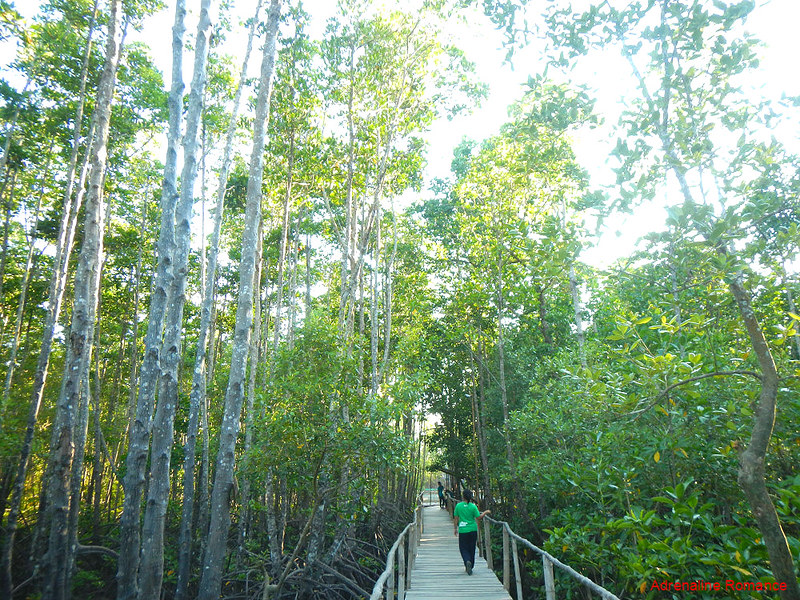
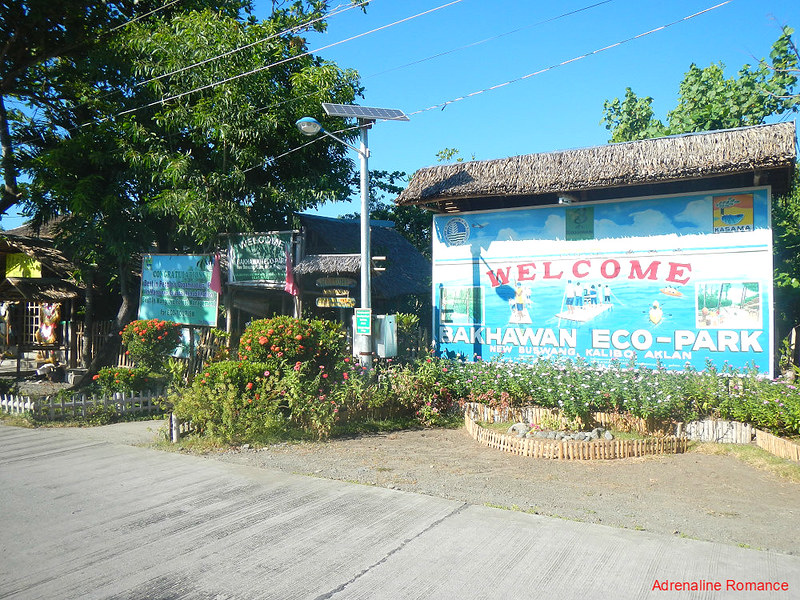

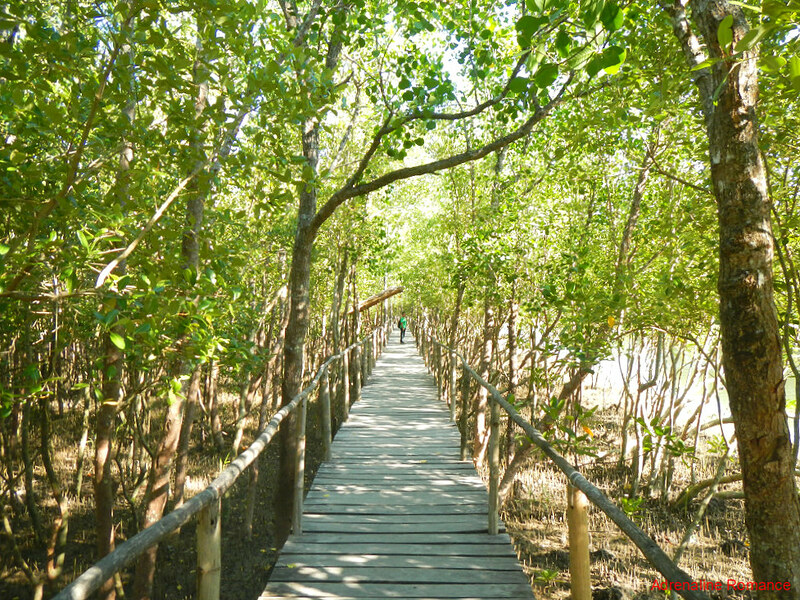



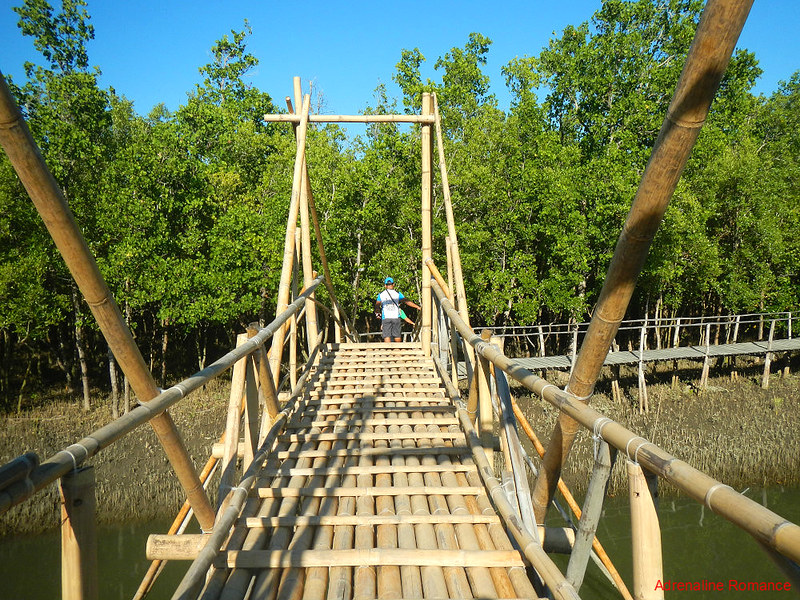
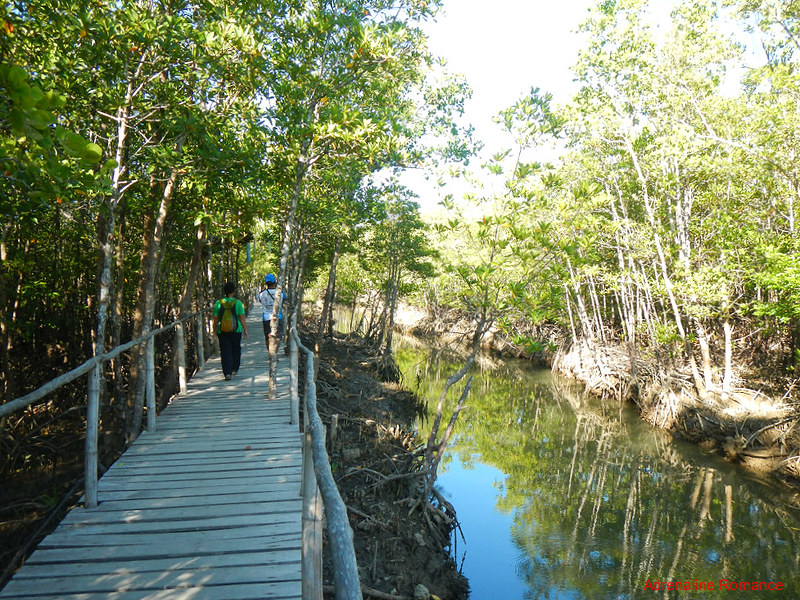
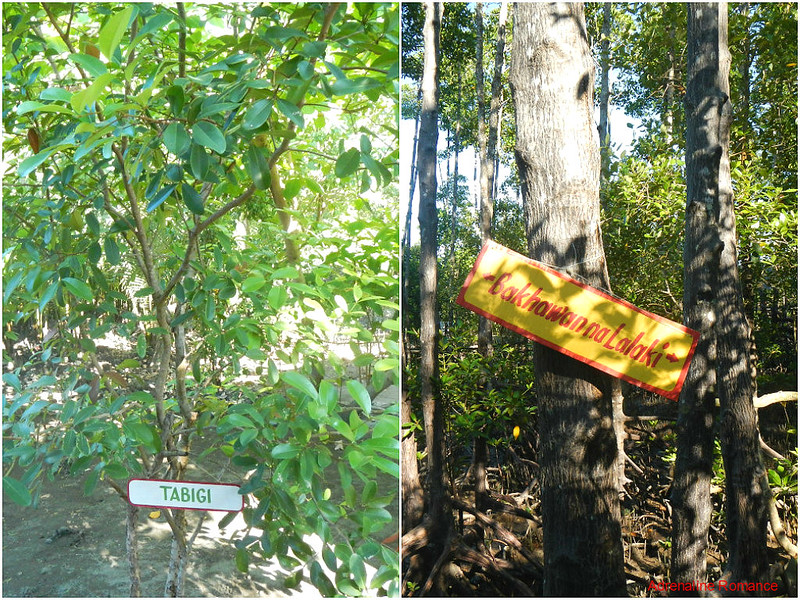
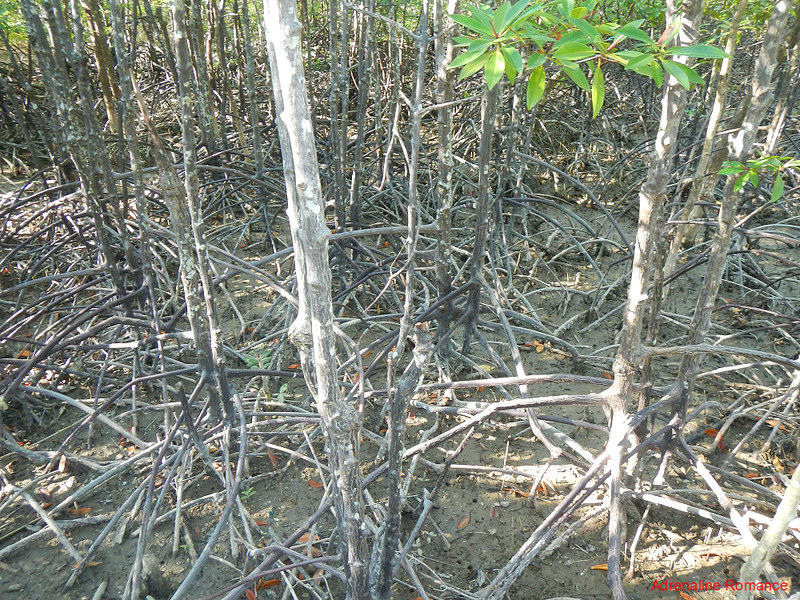
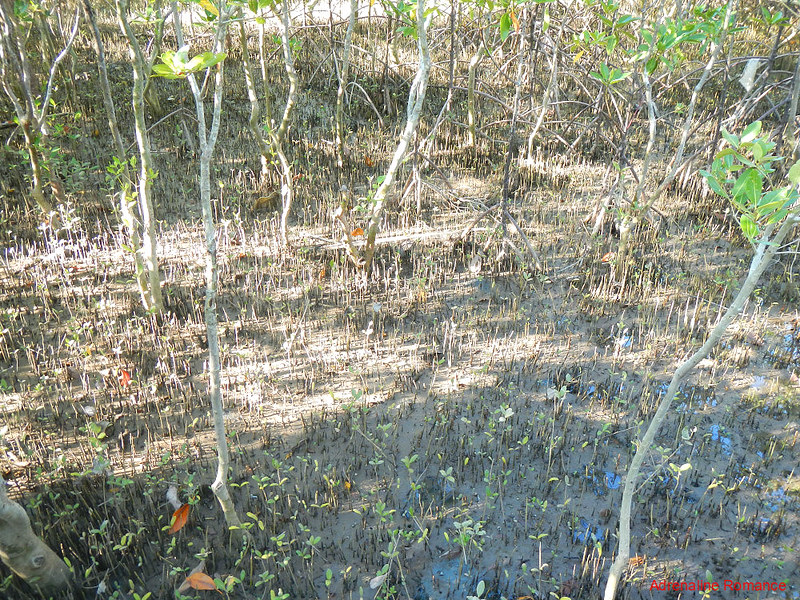

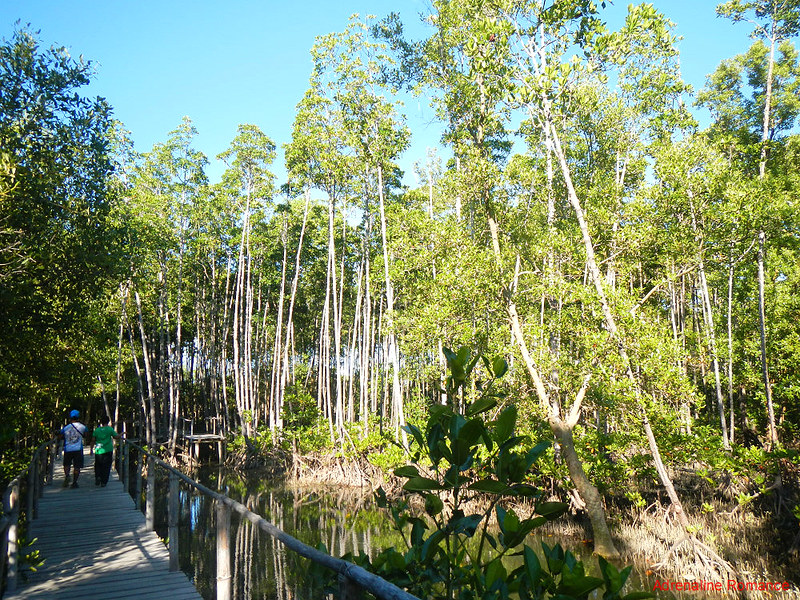
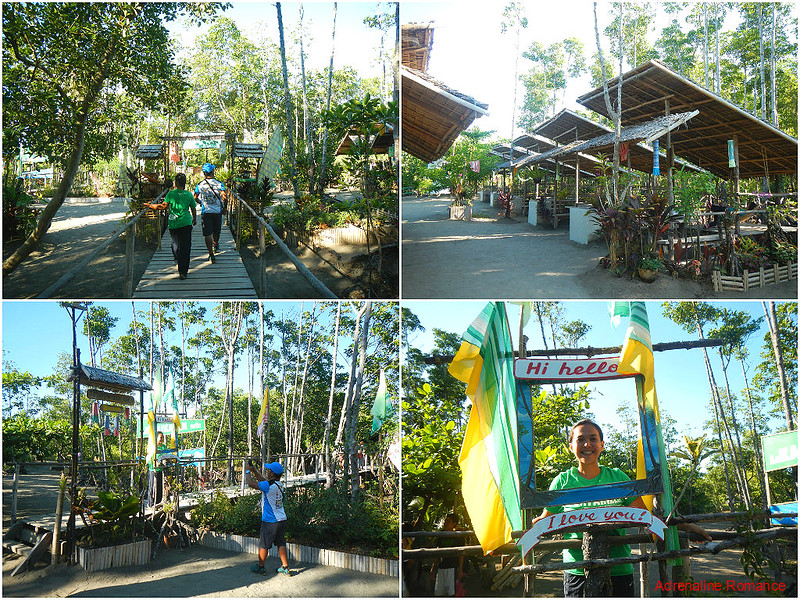

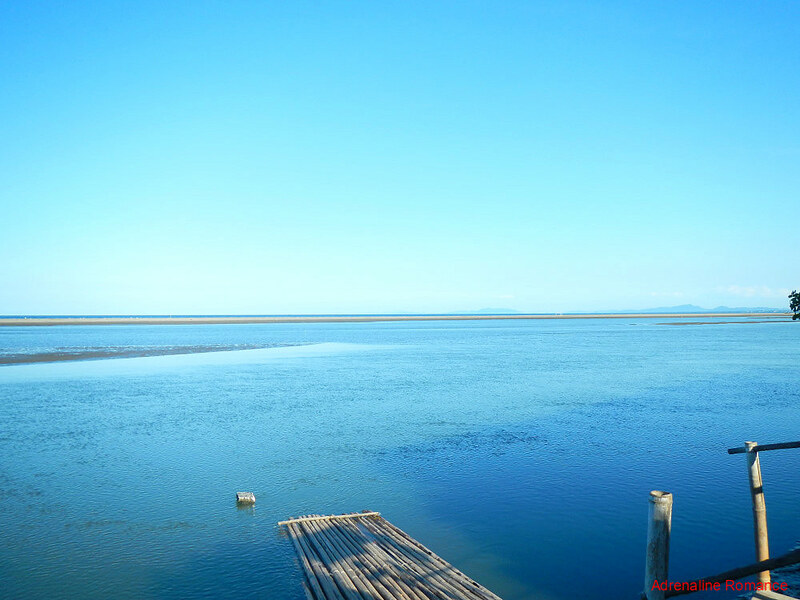
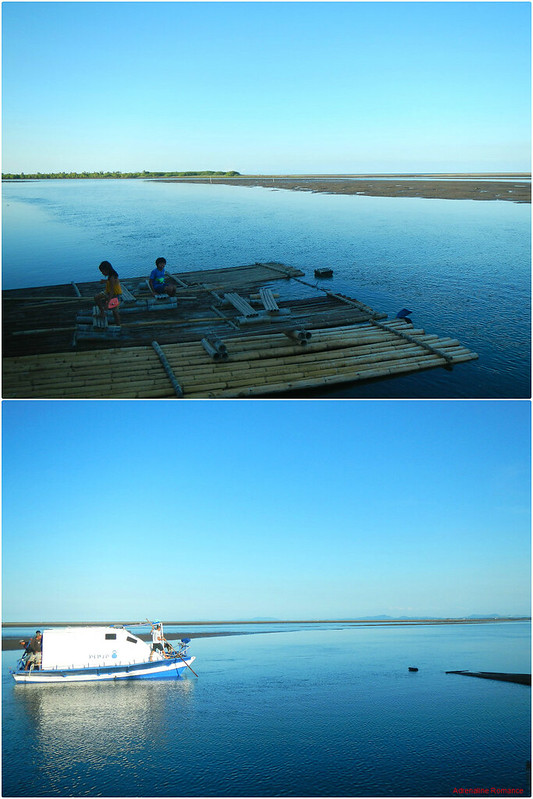
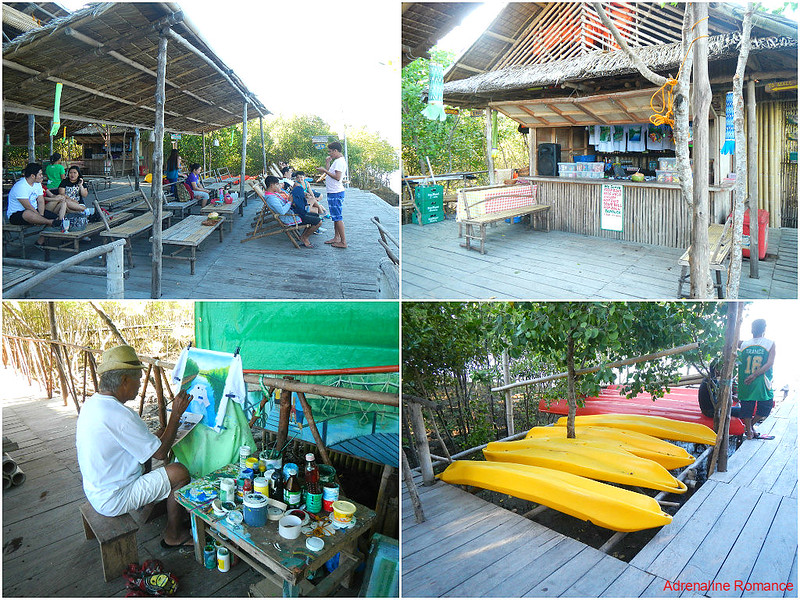


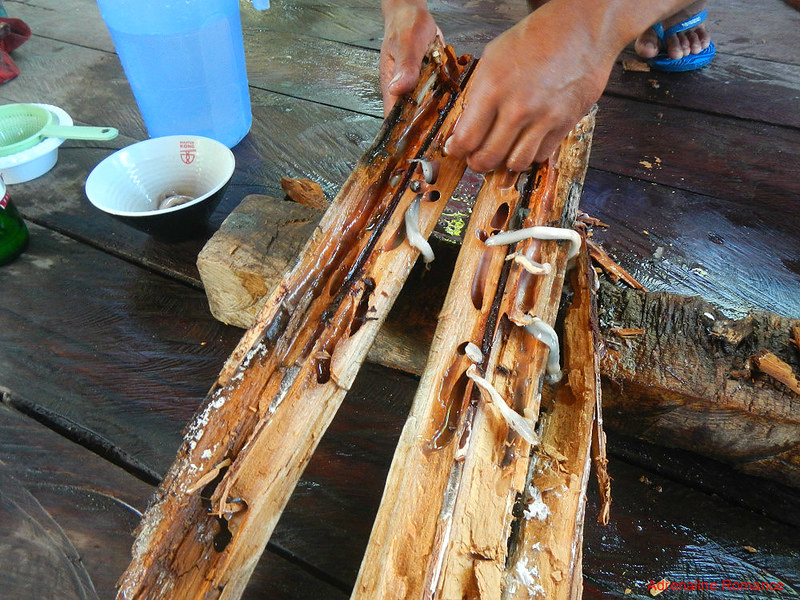
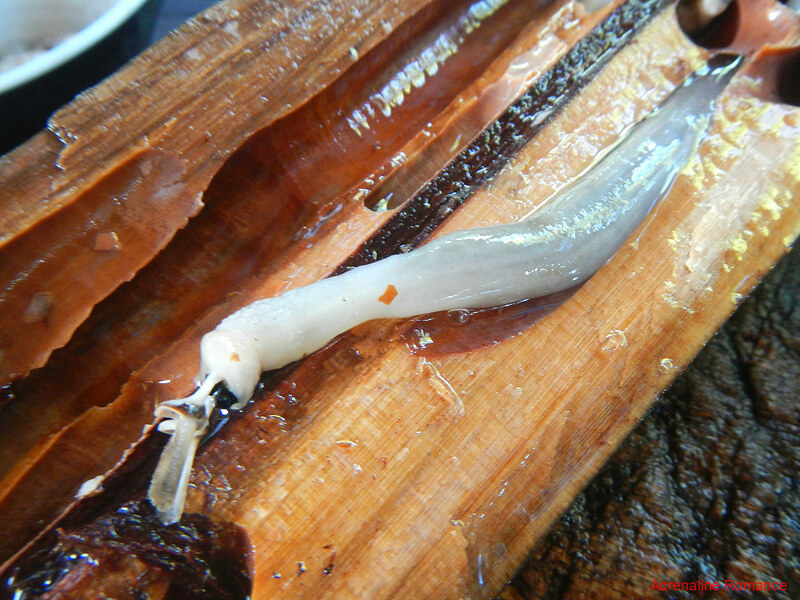

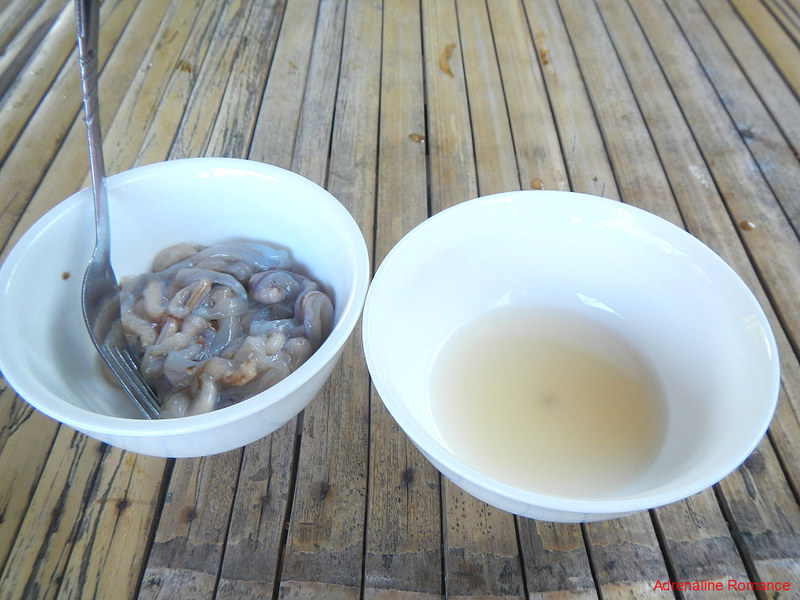

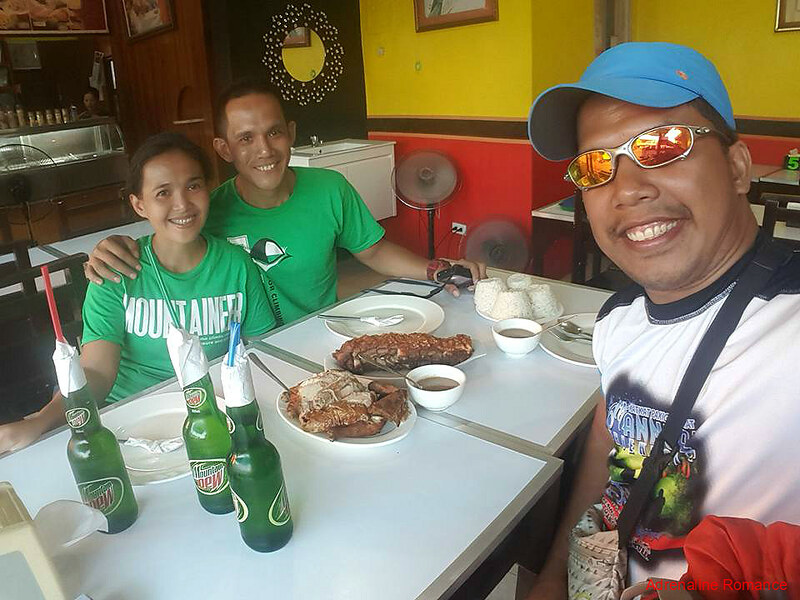
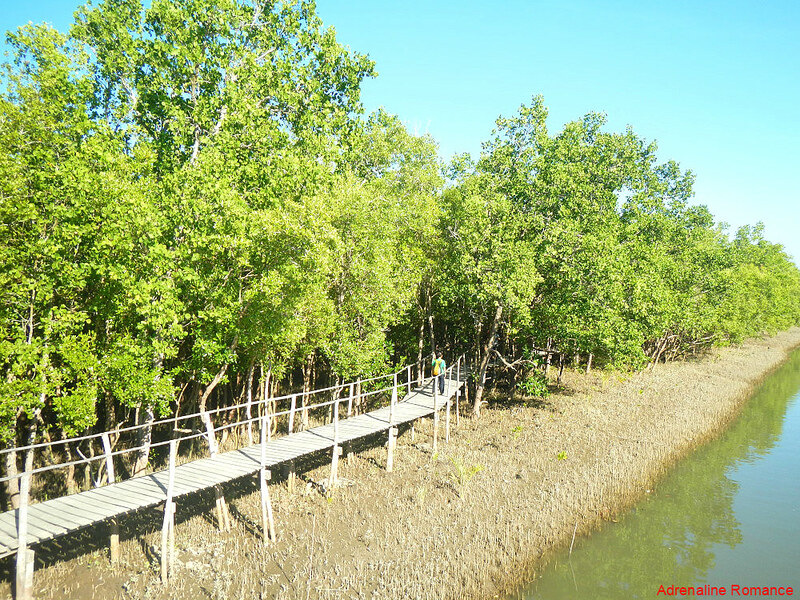
Wow, very nice.. Lil did i know of “bakhawan na lalaki” and “Tabigi”… Nice post po..
Thank you very much for the compliment. 🙂
No problem PO.
I wonder how it feels like walking on the well designed bamboo boardwalk where the sea breeze meeting the green leaves of Bakhawan. The air must be really refreshing and soothing as it kiss my surface. Thank you for sharing your travel journey with us.
Hi Little Lai,
It’s definitely refreshing! And the mangrove forest emits an interesting, relaxing earthy scent mixed with the familiar scent of the ocean breeze.
Please do visit this place if you happen to be in Kalibo. 🙂
Ah yes, the tamilok! I miss that! 😀
Last time I ate one was in Palawan, albeit the one we tasted was the fried version served at Kinabuch’s Grill in Puerto Princesa. The taste of wood and the sea is still on my mind…
Hi Monching,
Actually, tamilok tastes better when you eat it raw. Just dip it in vinegar to soften the blow. 🙂
Looks like a great place; thanks for the report.
Hi Ted,
It is an amazing place to learn more about mangroves and littoral areas. Please do visit this place if you have a chance to come to the Philippines.
I always like tulay na kawayan! Antique is my province by the way. Good read! I’ll consider going there when I get back!
Hi Marron,
We love the tulay na kawayan as well, especially its creaking sound. 🙂
Please do visit the Bakhawan Eco Park. It’s an amazing place. 🙂
[…] READ MORE […]
What I like most about you two is that you really immerse yourselves in every place you set foot on. True adventurers indeed!
Hi Sony,
Thank you very much for the compliment! For us, the only way to truly enjoy any trip or adventure is to immerse in it without any reservations, be it a positive or negative experience. Such deep immersion enables us to classify each adventure as a unique one. 🙂
I couldn’t agree more.
So nice but I can’t take that Tamilok…hehehe 🙂
Hi Smallterrible,
You can! It’s tasty!
Hmmm…it’s a great challenge for myself to eat it…but if it’s taste like Talaba maybe I could 🙂
Hi Smallterrible,
It IS a species of oyster. 🙂 It just looks disgusting due its worm-like form.
Hmmm…it’s a great challenge for myself to eat it…but if it’s taste like Talaba maybe I could 🙂
OMG, Tamilok! Just no! hahaha
Hehe! We dare you. It’s really not as bad as it looks. 🙂
Ok, that’s reassuring 🙂
Nice and insightful blog
Thank you very much for the compliment. 🙂
Am still a newbie and amateur blogger and reading your blog inspires me to write for more…. i found out still have to learn more….how i admire your being adventurous…
Hi Bhing,
Thank you! Readers like you also inspire us to write, travel, and go adventuring even more. 🙂
Keep it up!
Hi, may idea po ba kayo kung ilang oras po byahe from boracay to ecopark and ecopark to kalibo airport. Thankyou
Hi Racel,
We are not sure about the travel time from Boracay to the Bakhawan Eco-Park as we departed from Kalibo Airport. But based on a Google search, we would estimate it to be around 2 hours.
From the Eco-park to Kalibo airport, it’s around 15 to 20 minutes by tricycle.
Hope this helps. Thank you! 🙂
Very helpful sir, we will be having our vacation this July 14 – 17. We will drop by on our last day!
Thank you, Jovs! Don’t forget to try the tamilok. Hehehe! 🙂
Hi, do you have any literature about spirits or “taglugar” protecting the place? or any interesting stories regarding the beliefs of the local people in this area? Thank you! 🙂
Hi Glenn,
Unfortunately, no, we don’t have such literature. But you can ask Bakhawan Eco Park themselves. Contact details are in the blog post. 🙂
[…] Via Adrenaline Romance […]
[…] Via Adrenaline Romance […]